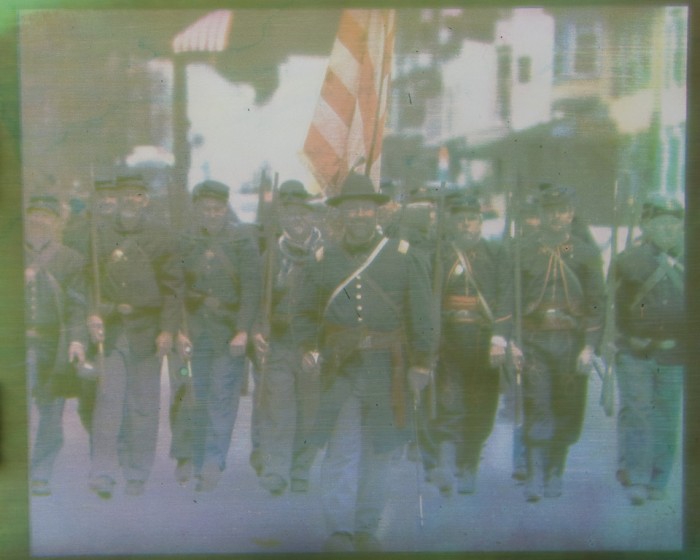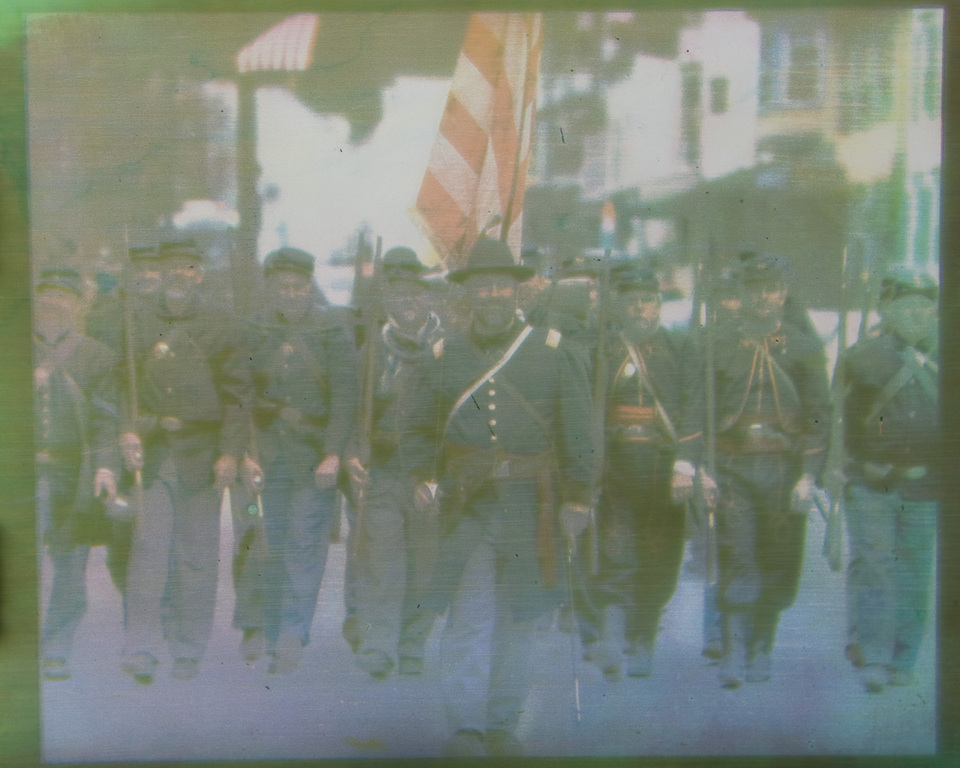Marching Ever Onward
Happy Father’s Day! I got three awesome presents today.
First, a bowl of radishes from our garden. Yummy, but photographically uninteresting.
Second, some sodium citrate and tartaric acid. Yay more kallitypes!
Third, the first hints of success with the process that I’ve been trying to get a hold on for something like 7 months now.
This shot is a reasonable but somewhat untrue representation of a shot through my first monstrosity: a 10×12″ casein print on glass. More specifically, this is five layers of glass, each with a color print. Behind them is a sheet of drafting vellum. The entire thing is about a half-inch thick, and you get a different view depending on where you’re looking at it from.
I’ve been flirting with success for a few months now. First, I tried to get this effect with gum. I found gum too unpredictable; it just barely holds on when you’ve prepared the glass *just so*. I went as far as using etching paste to very very slightly etch glass, and I found that I could mostly get gum to do what I wanted under those circumstances. Hydrofluoric acid (which is what you use to etch glass) is really, really nasty stuff. I hated using it.
In doing research in how I might be able to achieve this effect, I stumbled on a very small number of people doing casein printing (around February, I suppose). Casein, by all accounts, is stickier than gum. The few casein dichromate printers that I found use cottage cheese or dried milk as their source. I couldn’t justify ruining a kitchen appliance (the food processor) putting ammonia and casein in it, so I looked for another route – and found it. A company called Earth Pigments sells pure dried casein powder. Perfect.
And this is my first full print using this method. There are a few printing errors in it that I can easily avoid (like putting the negative emulsion in contact with the casein colloid – just print other-side-up, which softens the image a little tiny bit, but nothing like the softness of the misregistered glass plates anyway).
I am in awe of having been able to produce this thing – I found myself staring at it for about 20 minutes this afternoon just moving back and forth and examining its properties for the first time. I’m looking forward to making more of these. Now I just have to figure out how to frame them…
SO – about the shot, quickly – this is a digital capture from St. Patty’s Day in Jim Thorpe this past year. The civil war re-enactors somehow found some way to call St. Patty’s their own. I love it.
Hopefully, I will be part of a group show *in* Jim Thorpe this coming year. If that happens, you can bet I’ll have at least one of these prints in the show.


Can’t wait to see it in person!
I’ve been doing dry plate photography which uses gelatin on glass. I get it to stick by scrubbing the glass with Calcium Carbonate with Everclear 151 proof grain alcohol then a wash with just the Everclear. It works great, no frilling despite being in the chemicals and water a long time.
If I were to reverse print a negative onto another unexposed plate I suppose a positive image would form. That may be worth a try. Thanks.
Michael Carter
Thanks for the suggestions, Michael. So far the casein is sticking well with a simple scrubbing of barkeeper’s friend – I’ll try out CaCO3 + everclear and see if it’s able to hold more pigment. Straight gelatin emulsions are something I’d like to try out, but not until after I’m more confident with the casein color layers, and probably also gum color (which needs better glass preparation than casein – maybe here too CaCO3 will help me).